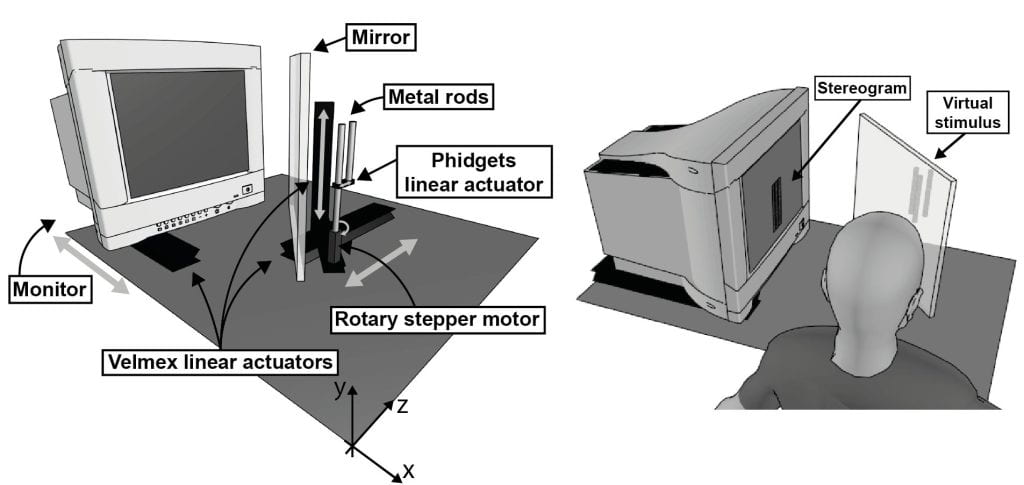Experimental settings
Our experimental devices are arranged to render 3D objects that appear to be floating in space beyond the mirror. Participants look into a half-silvered mirror slanted at 45° relative to the sagittal body midline, and the mirror reflects the image displayed on a 19″ CRT monitor placed directly to the left of the mirror. Stereoscopic presentation is achieved with a frame interlacing technique in conjunction with liquid-crystal goggles synchronized to the frame rate. To provide consistent vergence and accommodative information, the monitor is mounted on a linear positioning stage that can be situated on each trial to match the rendered viewing distance.


Renderings of 3D objects
Participants view stereoscopic renderings of 3D objects in a tabletop virtual reality setup, and either judge or interact with the virtual objects.


Motion tracking and haptic devices
The linear positioning stages and stepper motors align physical objects with the virtual stimulus, which allows participants to interact with the objects and receive haptic feedback. Movements are tracked by using an Optotrak Certus motion-capture system, which is coupled to our tabletop virtual reality environment.